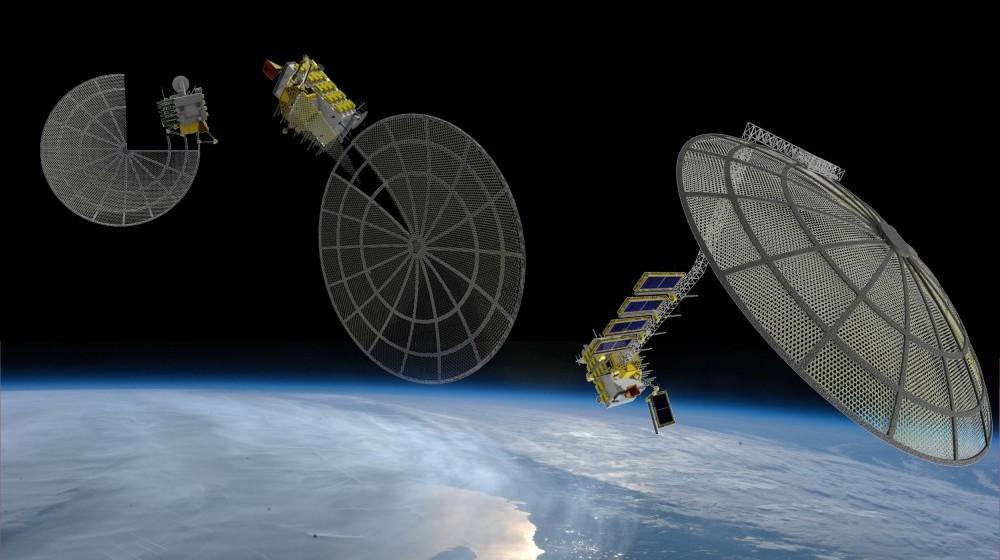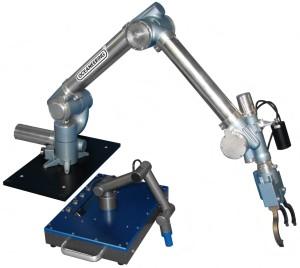 California’s space technology company Made In Space, currently preparing their second zero gravity 3D printer called the Additive Manufacturing Facility for the International Space Station, will be playing a key role in a NASA project that could completely revolutionize manufacturing in space. They will be partnering with Northrop Grumman and Oceaneering Space Systems on Archinaut, a 3D printer capable of working in the vacuum of space that will be equipped with a robotic arm. Archinaut is scheduled to be installed on an external space station pod and will be capable of in-orbit additive manufacturing, the fabrication and assembly of communications satellite reflectors or the repair on in-orbit structures and machinery.
California’s space technology company Made In Space, currently preparing their second zero gravity 3D printer called the Additive Manufacturing Facility for the International Space Station, will be playing a key role in a NASA project that could completely revolutionize manufacturing in space. They will be partnering with Northrop Grumman and Oceaneering Space Systems on Archinaut, a 3D printer capable of working in the vacuum of space that will be equipped with a robotic arm. Archinaut is scheduled to be installed on an external space station pod and will be capable of in-orbit additive manufacturing, the fabrication and assembly of communications satellite reflectors or the repair on in-orbit structures and machinery.
The two-year-long, $20 million NASA project will culminate in a live, orbital demonstration of Archinaut’s ability to create large, complex structures sometime in 2018. The project is officially known as Versatile In-Space Robotic Precision Manufacturing and Assembly System. It was selected as one of several projects chosen by NASA as part of their Tipping Points campaign, a program to fund prototypes of space technologies that could potentially lead to significant government and commercial applications. The project was originally selected back in November 2015 as one of three projects, each with a focus on the robotic manufacturing and assembly of in-orbit spacecraft and structures.
“We are attempting to change the way we build space systems. Now, we build things on the ground and launch them using fairly expensive and complicated rockets. We are seeking to create an infrastructure to build systems in space rather than launching them,” explained associate administrator for NASA’s Space Technology Mission Directorate Steve Jurcyk during a press conference at Made in Space’s office in the NASA Ames Research Park.
In-orbit manufacturing and fabrication could revolutionize the design of spacecraft and orbital technology. Engineers would no longer be required to design structures or devices that need to be capable of withstanding the force of Earth’s gravity, fit inside of a rocket being launched into orbit, or surviving the massive vibrational and acoustic forces experienced during launch. An orbital manufacturing facility would also offer NASA, and other private space companies, the option of only needing to launch basic, raw materials used for 3D printers and a selection of high-value components like sensors, electronics and batteries into orbit.
Once in space Archinaut would get to work constructing satellites or other types of spacecraft, and can be attached to a larger structure or maneuver independently. The 3D printer would start fabricating the structure in the open vacuum of space, while the robotic arm would install the non-3D printed components during the process. According to the contract with NASA, Archinaut’s orbital 3D printer will be developed by Made In Space while the manipulator arm is set to be made by Oceaneering Space Systems. Northrop Grumman was selected to provide systems engineering, control electronics, software, testing and the development of Archinaut’s ISS interface.
If the planned tests in 2018 are successful and Archinaut is proven as viable, Made In Space and Oceaneering Space Systems hope to continue the project by testing a followup model with additional robotic arms and a larger capacity 3D printer to test Archinaut’s ability to be scaled up. The eventual end result would be a version of Archinaut that would be a three-armed, orbital manufacturing robot that can maneuver around in space autonomously and attach itself to orbital structures. Archinaut could be used to add or remove external components, make repairs and upgrades and even remove and repurpose parts from decommissioned spacecraft. Archinaut could even be used to clean up space debris while not in use and either recycle it, or collect it for removal from orbit. What do you think about this latest project for NASA? Discuss in the 3D Printer with Robotic Arm for NASA forum over at 3DPB.com.
Subscribe to Our Email Newsletter
Stay up-to-date on all the latest news from the 3D printing industry and receive information and offers from third party vendors.
Print Services
Upload your 3D Models and get them printed quickly and efficiently.
You May Also Like
3D Printing News Briefs, May 21, 2025: Medical Training Models, Connectors, Makerspace, & More
We’re starting with research and medical in today’s 3D Printing News Briefs, as a research team from Caltech is using sound to 3D print deep inside living tissue, and rural...
Low-Cost Binocular Indirect Ophthalmoscope Made with CAD Software & Bambu Lab X1C
3D printing is increasingly used in the fabrication of diagnostic equipment, including ophthalmology, which is a medical specialty that deals with the diagnosis and treatment of eye conditions and diseases....
3D Printing News Briefs, May 17, 2025: Color-Changing Materials, Humanoid Robot, & More
We’re covering research innovations in today’s 3D Printing News Briefs! First, Penn Engineering developed 3D printed materials that change color under stress, and UC Berkeley researchers created an open source,...
3D Printing News Briefs, May 14, 2025: Thermal Solutions, Food Safety, & More
In today’s 3D Printing News Briefs, Meltio announced a new sales partner in the Benelux region, and Eplus3D is helping TEMISTh to revolutionize metal additive manufacturing in thermal solutions. Moving...





































